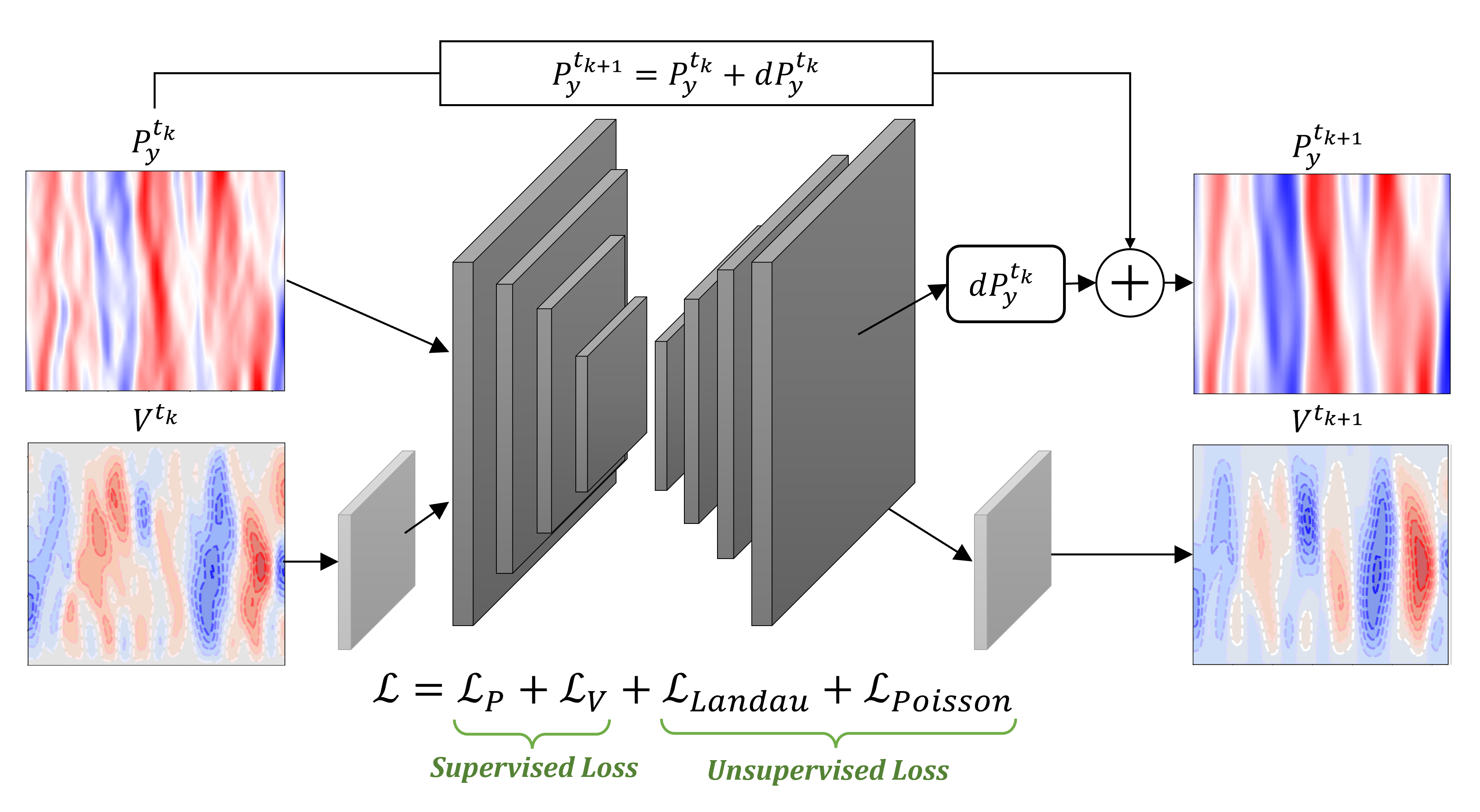Machine learning surrogate model for acceleration of ferroelectric phase-field modeling
Phase-field modeling is a powerful technique for predicting domain structure evolution and electro-mechanical properties of ferroelectric materials. However, it remains computationally very expensive thus demanding high computing resources and restraining its use for exploring large systems.
Imagine if simulations could speed up by hundreds of times while keeping accuracy intact. Here, we present a specifically neural-network-trained model trained on Landau energy for ferroelectric phase-field simulation. This model predicts how the polarization field evolves over time, maintaining electrostatic and mechanical balance at each step. It produces precise, stable predictions, even across long and complex simulations. With less than 5% relative error compared to high-fidelity methods, it’s a replacement for real solvers in full simulations. Our approach is at least 685 times faster than traditional methods, opening doors to explore and design ferroelectric materials.
While this publication primarily centers on ferroelectrics, the implications of these neural network surrogates extend far beyond. They have the capability to revolutionize a large array of numerical simulations, unlocking the potential for material exploration and design across a wide range of scientific domains.
Contacts
Kévin ALHADA, Brice GAUTIER, Damien DELERUYELLE
Reference
Machine Learning Surrogate Model for Acceleration of Ferroelectric Phase-Field Modeling
Kévin Alhada-Lahbabi, Damien Deleruyelle, and Brice Gautier
ACS Applied Electronic Materials 2023 5 (7), 3894-3907
DOI: 10.1021/acsaelm.3c00601





